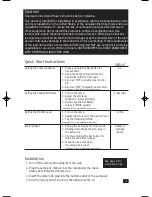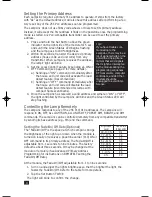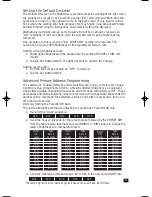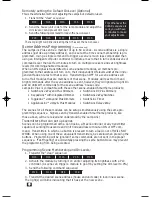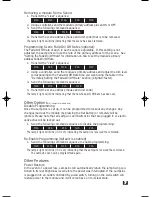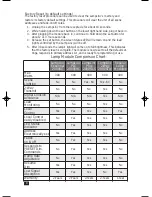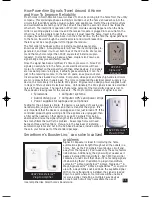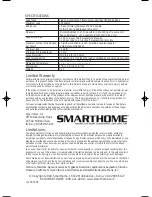
Understanding the Local Control Feature
Local control allows a user to turn on a lamp without having to send a signal to the
LampLinc module. A lamp can be turned on and off manually by the switch on the
lamp and the LampLinc will respond to this. There are three possibilities:
The load control feature can be used safely with any incandescent or filament type
lamp. However, using the load detect feature with a lamp with a built in dimmer
(such a Torchier halogen), ballast transformer or other electric/electronic controls may
result in false triggering. For non-incandescent bulbs, it is recommended that the
load detect feature be turned off, (by sending an OFF during the setting of the pri-
mary address).
About LampLinc’s Certification
LampLinc has been thoroughly tested by ITS ETL SEMKO, a
nationally recognized independent third-party testing laboratory.
Products bearing North American ETL Listed mark signifies that
the product has been tested to and has met the requirements of
a widely recognized consensus of U.S. and Canadian product
safety standards, that the manufacturing site has been audited,
and that the manufacturer has agreed to a program of quarterly
factory follow-up inspections to verify continued conformance.
Installation Tips
Due to the size of LampLinc, it will block the bottom outlet of a duplex wall receptacle
if plugged into the top outlet. If possible, use the bottom outlet for the lamp module
so that the other outlet is accessible for other use. For convenience, a pass through
receptacle has been supplied on the lamp module so you don’t lose a receptacle.
If the LampLinc is plugged into a receptacle controlled by a wall switch, consider
leaving the switch on at all times. This will ensure that the LampLinc never loses
power and is always functioning. If the outlet is switched off, the LampLinc will turn
the light back on to the last dim level before power was switched off.
A new LampLinc or one that has been Factory Reset (see page 8) will be set to
address A-1. If other 2-way modules are set to A-1, The LampLinc may may come on
when the other unit is activated.
If the lamp being controlled by the LampLinc has a dimmer, turn that dimmer to full
on and allow the LampLinc to control the lamp’s brightness.
Never stack LampLinc and/or ApplianceLinc modules together.
The internal heat
generated by the units when controlling a load may cause them to overheat or
catch fire.
9
Move the switch on the lamp to the “OFF” position
and then back to the “ON” position. The lamp will
turn on
Move the switch on the lamp to the “ON” position.
The lamp will turn on.
Move the switch on the lamp to the “OFF” position.
The lamp will turn off.
Turning on a lamp locally
when it was turned off
remotely
Turning on a lamp locally
when it was turned off locally
Turning off a lamp locally while
it’s turned on
LampLink Plus& PLC for web (Mar04).qxd 3/15/2004 9:59 AM Page 9



